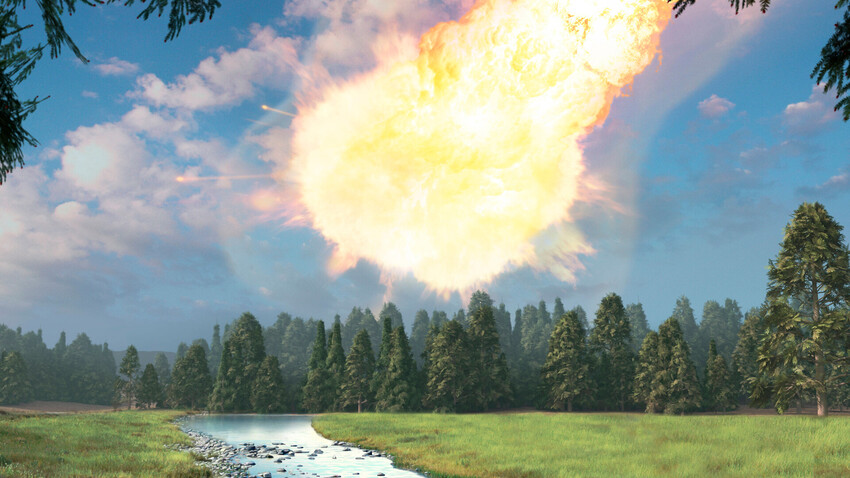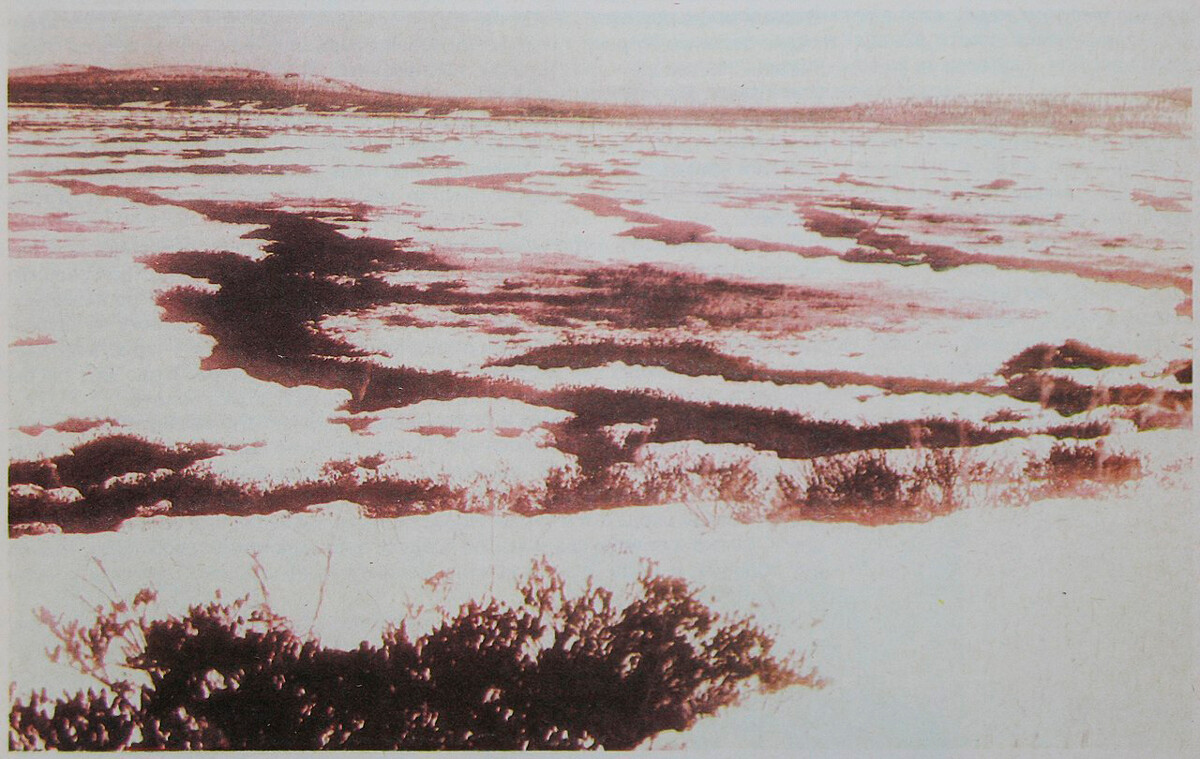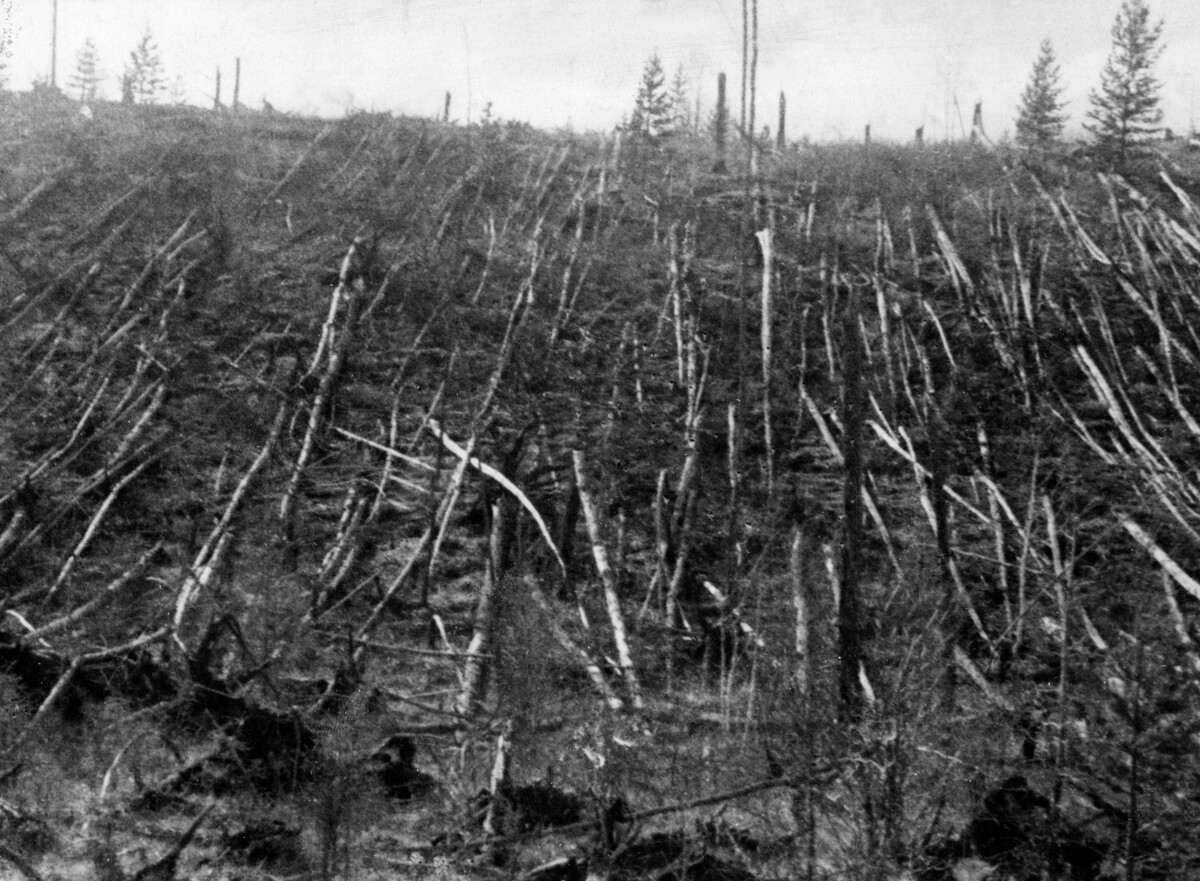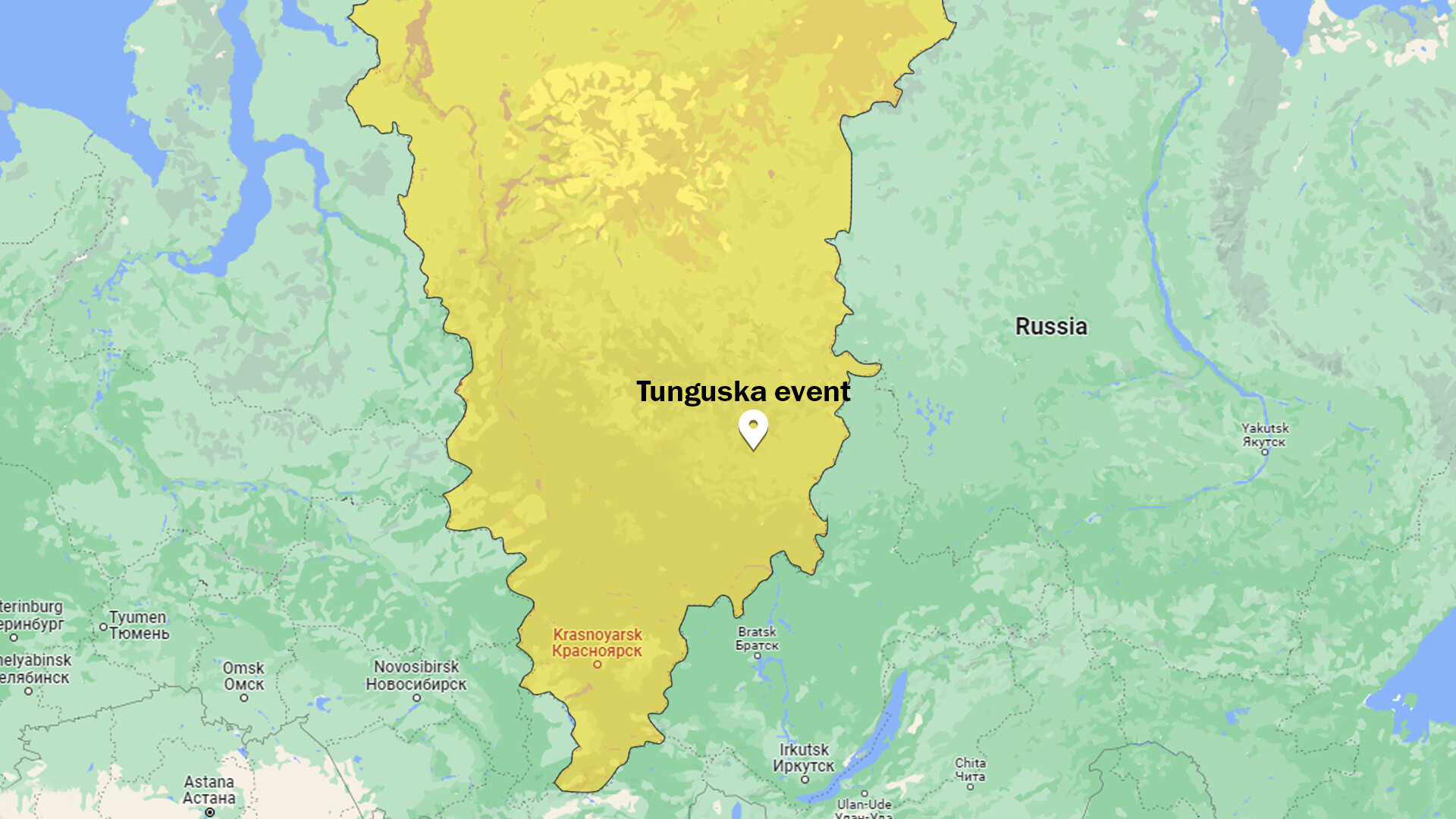
To this day, not one of the many hypotheses on the origin of the Tunguska event has been widely accepted. (We explored some of them in our 100-anniversary text about the event.)
First, here are some of the wildest efforts to explain what happened over the Podkammenaya Tunguska River that fateful day. According to the indigenous Evenk people, it was the beginning of the end of the world, as the mighty god Agdy came down to Earth to punish the lawless humans. In the Soviet period, fanciful writers speculated that an alien spaceship had crashed. On a more scientific note, some academics posited that it might have been an antimatter explosion, or perhaps an ice comet, or even a mini-black hole.

The taiga in the area of the Tunguska event, 2008
Vitaliy Bezrukikh/SputnikIn 2008, a previously unknown account of the event surfaced, published by Andrey Olkhovatov, PhD, who has researched the Tunguska event. However, this account, which was recorded by Soviet ethnographer Sevyan Vaynstein in 1948, only repeats the previous ones.
A local named Ilya Tyganov, who was 19 at the time of the event, recalled that one or two nights before the event, the sky was as bright as at dawn. Tyganov said that this was not the Northern Lights that he had seen many times before, because the Northern Lights are barely visible in the summer sun.
Suddenly it was light all over the sky, recalls Ilya Tyganov, who was unable to sleep that bright night. He wasn’t the only one; other locals did not sleep either, and the dogs barked and howled. In the morning, Tyganov was horrified to see how in the sky on his left side something that appeared to be a "second sun" was flying along the shores of the Podkamennaya Tunguska River. But this was brighter than the real sun.

Evenk region, the debris caused by the Tunguska event, 1930s photo
SputnikAt the same time, there was a strong rumble, stronger than any thunderstorm. Soon, a column of bright fire rose to the sky without smoke and there was a deafening explosion, such as had never been heard before or since. The earth trembled, a strong ferocious wind arose. All across the taiga, tall trees were torn out of the ground along with their roots. Then everything went quiet, but for the next night or two it was still very bright, and the dogs continued to bark and howl almost continuously.
The main problem with the investigation of the Tunguska event is that no pieces of whatever hit the Earth or flew by it on June 30th, 1908, have ever been found.

The Tunguska swaps, where the Tunguska object might have possibly fell, 1931 photo, Vokrug Sveta magazine
Public domainThe results of the latest Russian scientific publication were published in February 2020 in the prestigious Monthly Notices of the Royal Astronomical Society. The article argues that “the Tunguska event was caused by an iron asteroid body, which passed through the Earth’s atmosphere and continued to near-solar orbit.” This is now seen as the only plausible theory that sufficiently explains the fact that the ‘Tunguska object’ left no remains on the surface of the Earth.
The prevalent hypothesis in Soviet times was that the Tunguska object was an ice comet. However, the heat generated by friction of the object against the Earth’s atmosphere would have completely melted the icy body on approach. A stone meteor would also have crumbled into pieces due to increased pressure when Earth’s air penetrates into a flying body through microcracks. Only iron meteors are stable enough to maintain their physical integrity, the researchers claim.

Evenk region, the debris caused by the Tunguska event, 1930s photo
Sovfoto/Universal Images Group via Getty ImagesSo, the most probable hypothesis is that the Tunguska object was an iron body about 100 to 200 meters across, which flew 3,000 kilometers through the atmosphere. With such characteristics, its speed should have been about 20 m/s, and the flight altitude at about 11 kilometers.

This model explains several features of the Tunguska phenomenon. The absence of an impact crater is due to the fact that the meteor simply did not fall to Earth. The absence of iron debris is also explained by its high speed because the object was moving too fast and would be too hot to lose substance. The researchers said that any loss of mass could be caused by the sublimation of individual iron atoms, which will look exactly like ordinary oxides on Earth. Therefore, it’s impossible to isolate them from the soil.
While highly plausible, this newest theory still awaits wider scientific recognition and critique.
Dear readers,
Our website and social media accounts are under threat of being restricted or banned, due to the current circumstances. So, to keep up with our latest content, simply do the following:
If using any of Russia Beyond's content, partly or in full, always provide an active hyperlink to the original material.
Subscribe
to our newsletter!
Get the week's best stories straight to your inbox